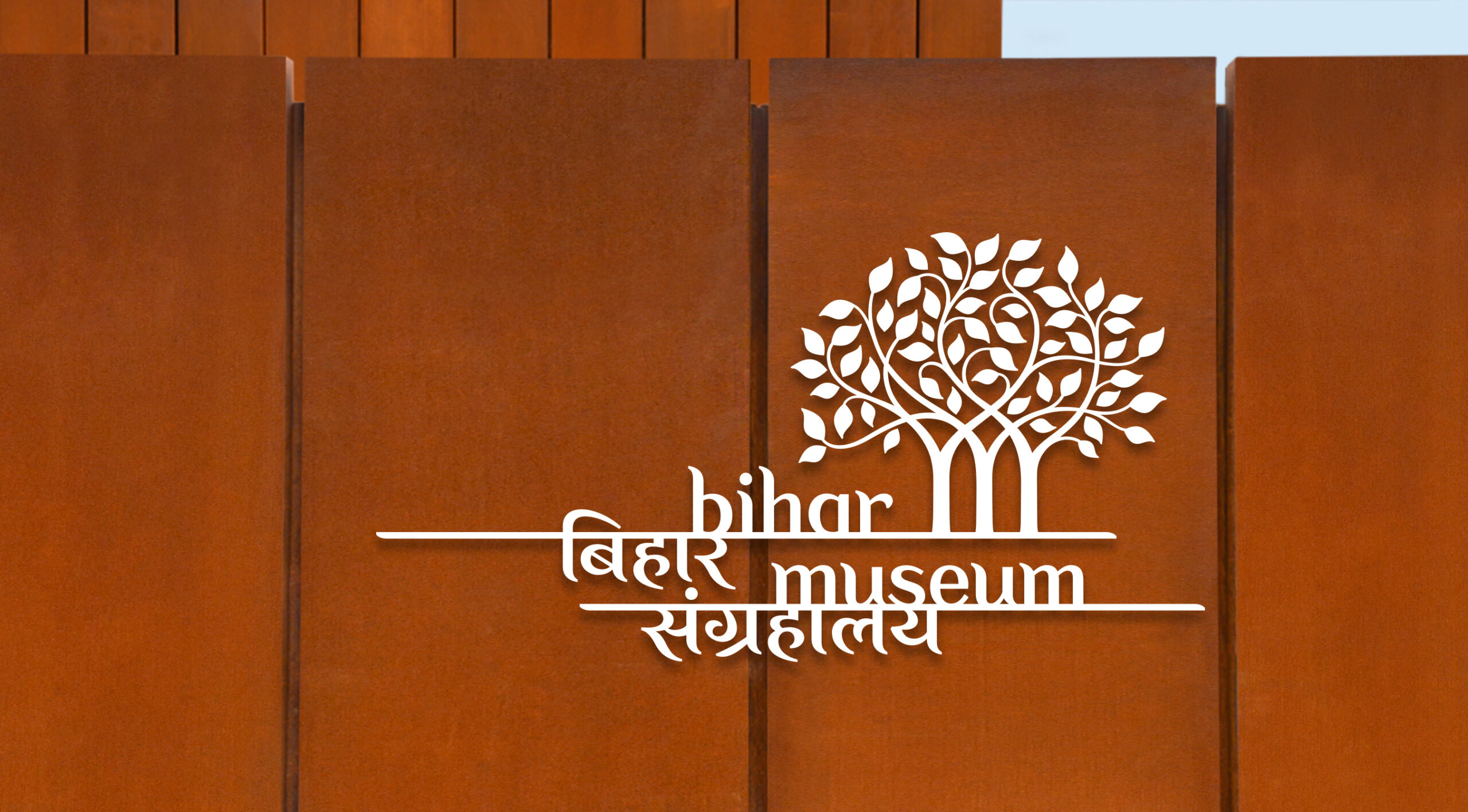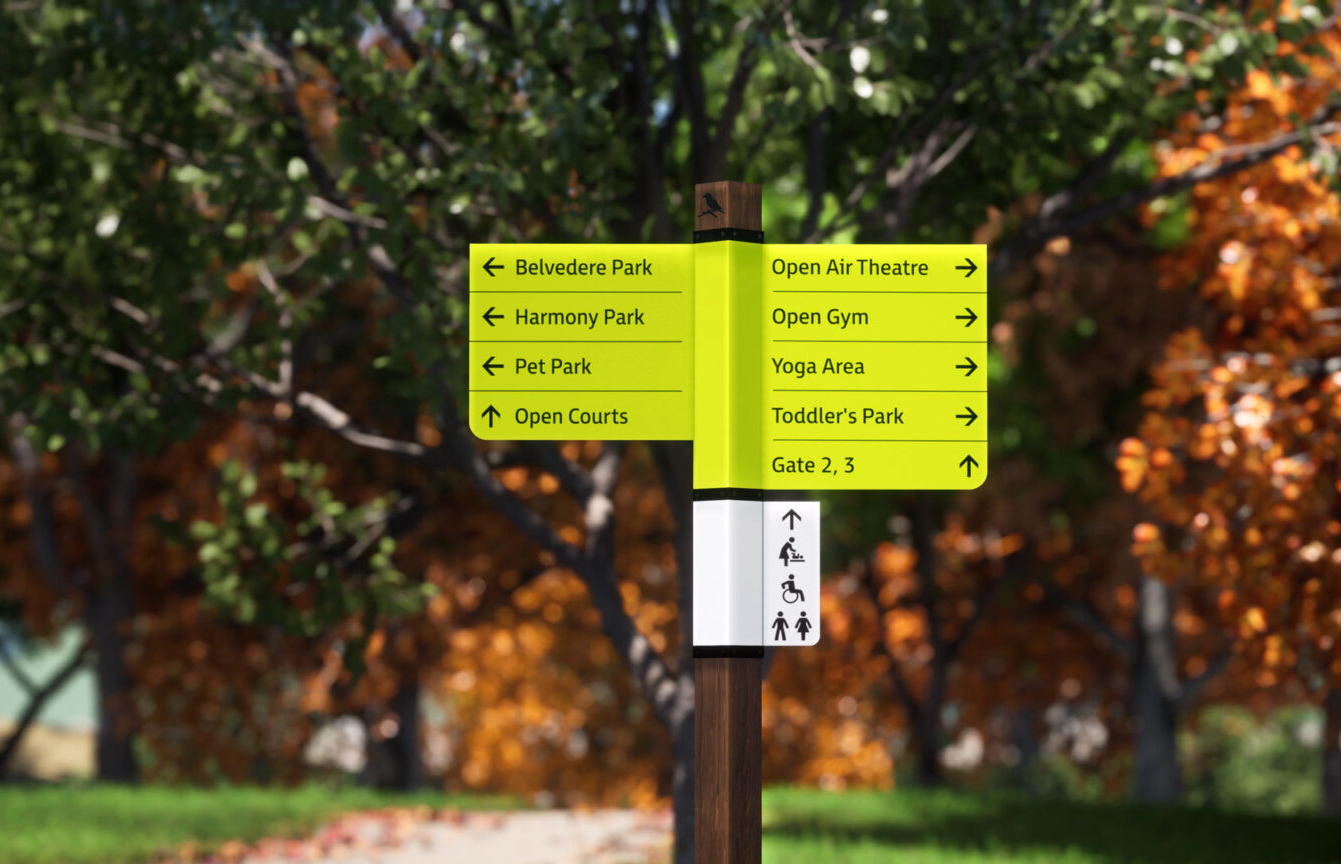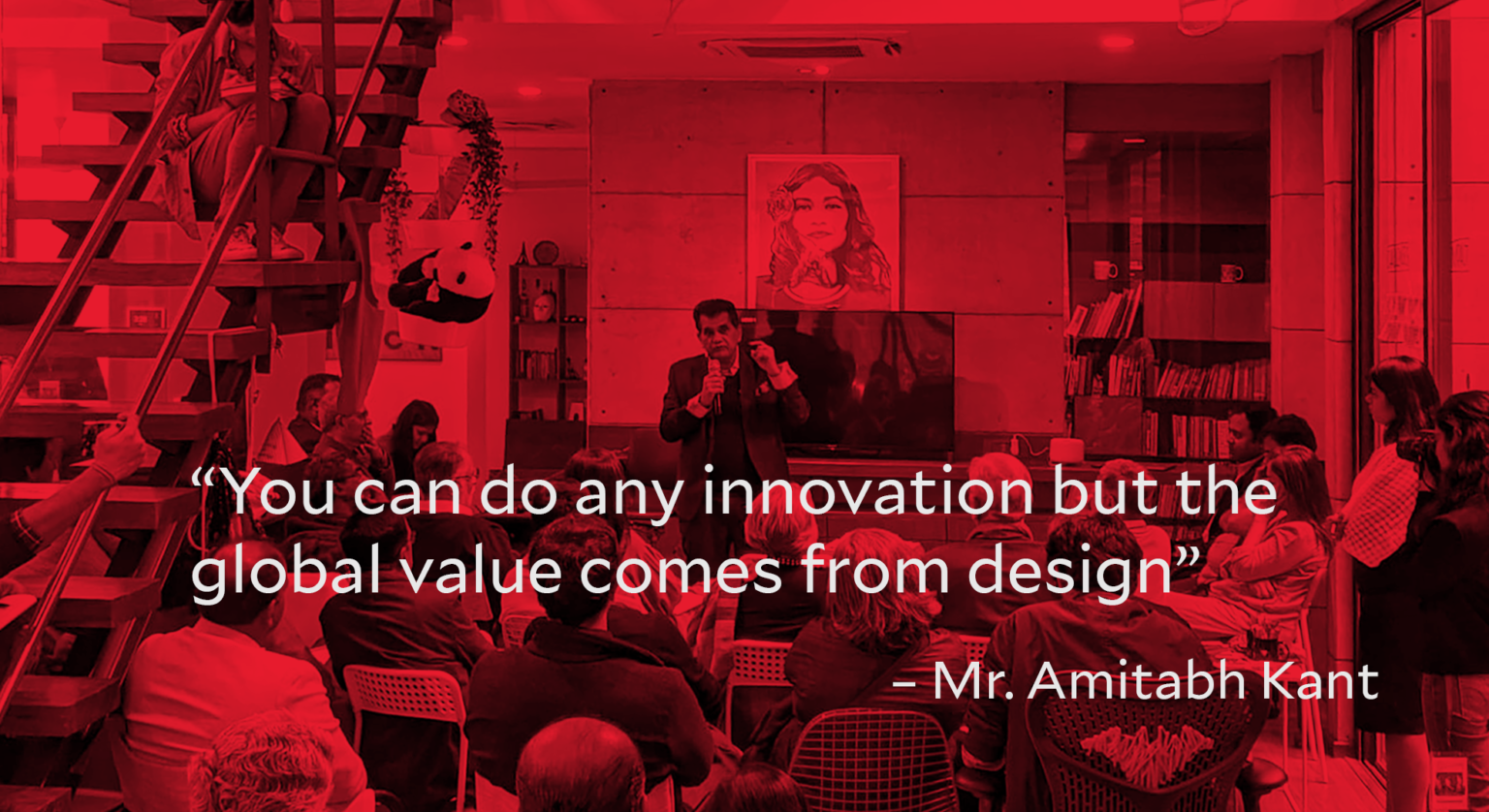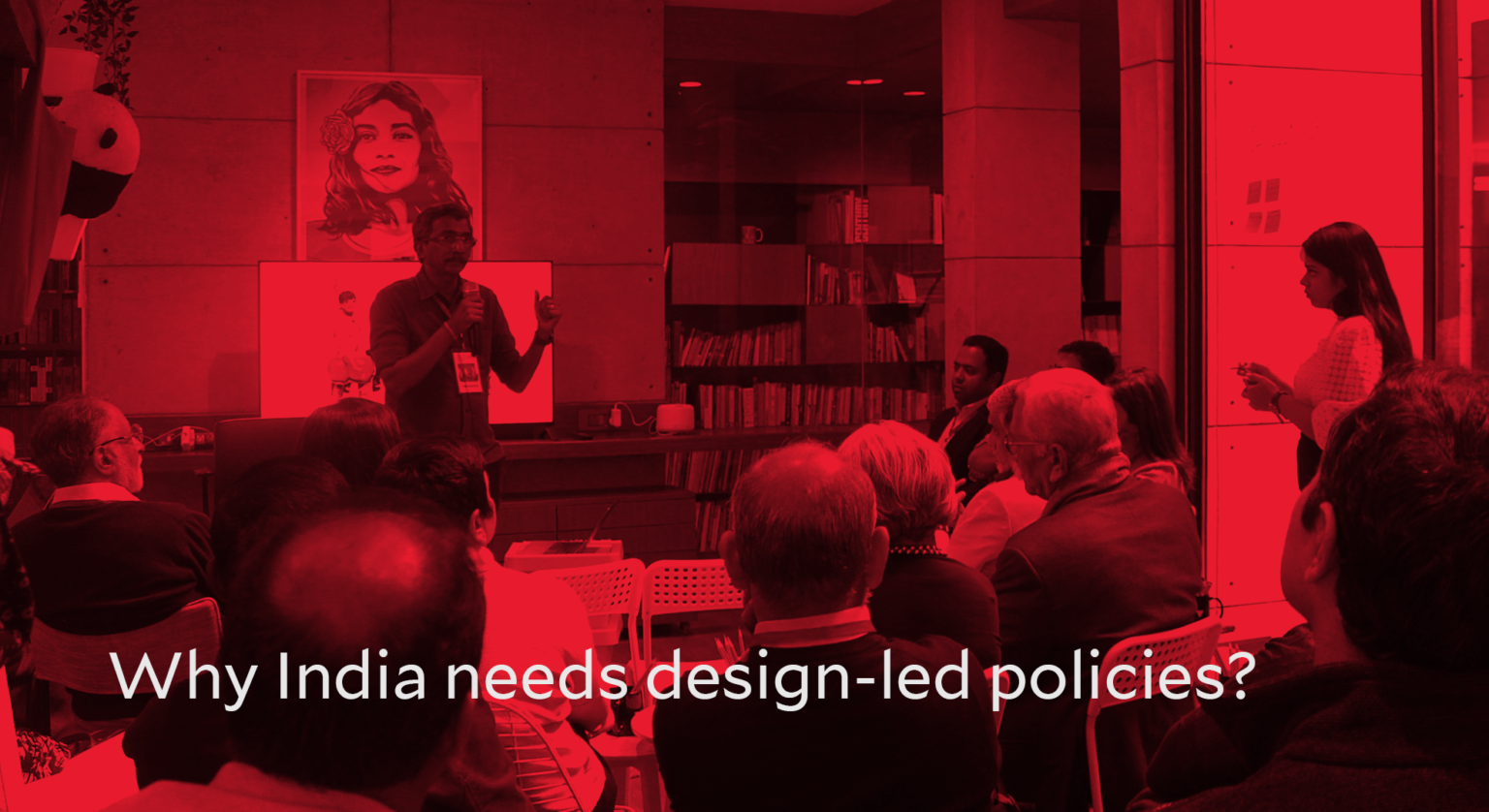Dialogues over DesignFirst
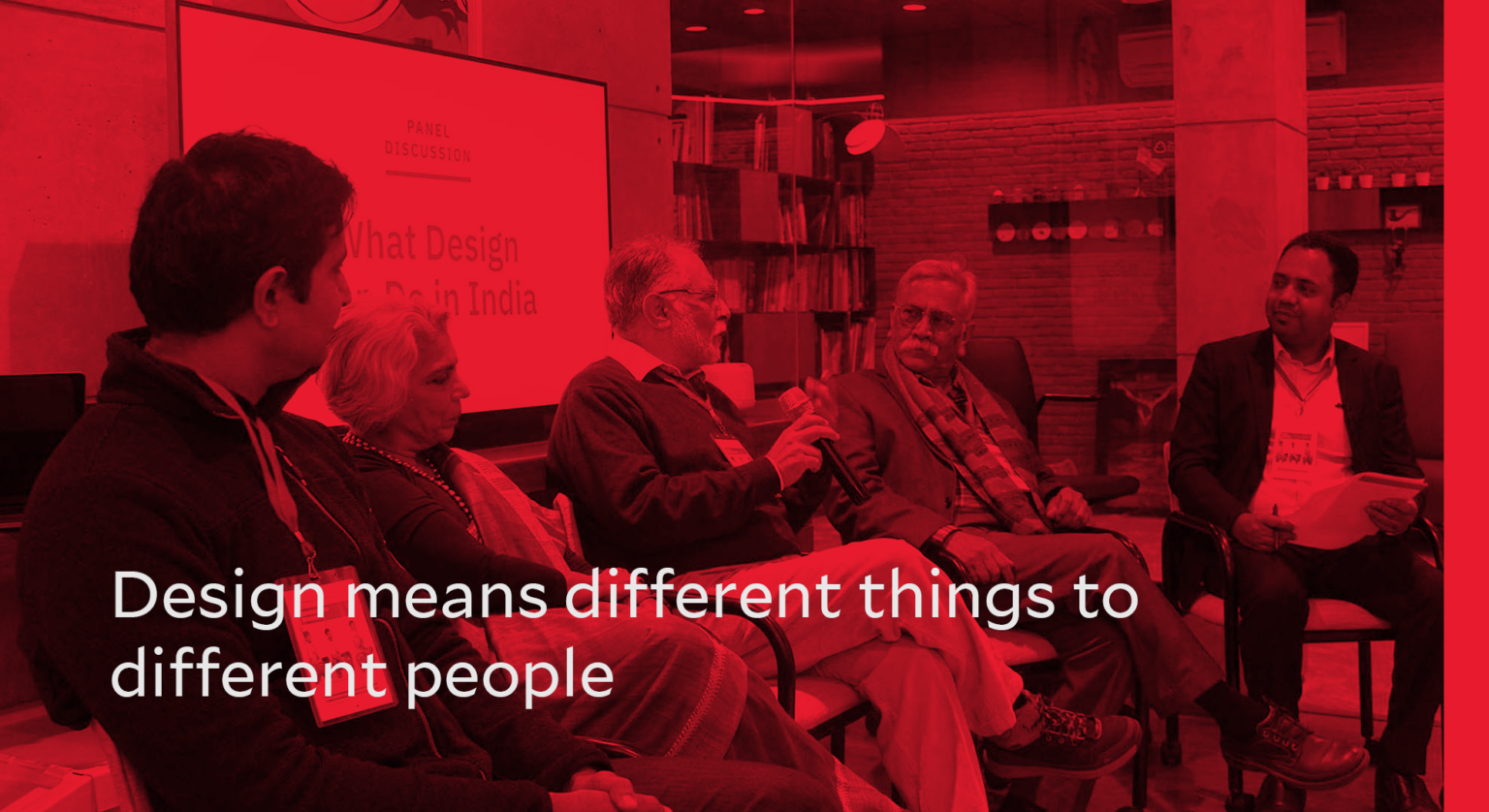
The opening session brought together four panelists who represent different sectors - Social, Technology, Policy and Education - Archana Shah of Bandhej, Jatin Bhatt of Ambedkar University, Sunil Malhotra of Ideafarms and Abhimanyu Nohwar of BCG to discuss DesignFirst.
The Forum took off with an interactive session, with the four panel members responding to questions raised by moderator Ravi Badve of Mastercard, in which the audience also participated. All stakeholders have different views of design - and therefore each one’s agenda is different. These multiple perspectives make it hard to pigeon-hole design or create a very specific conclusion about how one policy can be framed or to find a common set of concerns. Some of the thoughts were how to put ‘design thinking’ first instead of ‘ourselves’ and how to make a difference through small interventions.
Making design democratic
Sunil Malhotra spoke about the need to make design more democratic, saying, “Design is too important to be left to designers. We cling on to design as we own it. We need to create ways for it to go further.” Malhotra reminded us that it was Steve Jobs who was responsible for creating a greater design consciousness. Could design be a connection? After all, the only reason design exists is to enrich lives and livelihoods.
Archana Shah of Bandhej emphasised the need to support livelihoods for craft, especially with its diverse skills. Supporting the craft sector would mean supporting diversity and the uniqueness of each region. More so, to aid them in getting markets for their products, as their earlier ready markets no longer exist. Shah said there was a need for collaborative efforts from designers, also because Indian crafts are naturally eco-friendly ways of production and therefore sustainable.
How design works
Bharti Ramola, a business consultant gave an outstanding example of design intervention that brought down the accident rate in Mumbai’s transportation line. “....a fantastic real impact of a story, so heartbreaking and so possible.” Accidents for commuters of suburban trains were the primary cause for the maximum number of unnatural deaths. Painting railway sleepers across the tracks yellow helped commuters to gauge distances while crossing and led to a 71% reduction of accidents outside Vadala.
Aditya Dev Sood of Vihara shared his learnings from working in public health for over a decade, adding, “...in all these experiences there is something around the agency model, that we have learned is a logical way to good design.” Sood feels just innovations and interventions are not good enough and for these to be scaled up, designers have to promote them. “You actually have to proselytize, evangelize, sell and market just as Steve Jobs did.”
Peyush Agarwal of Designit spoke about his experiences with the Design Yatra policy. “We were thrilled as designers, and in the capacity of design, invited to do something that would be part of policy.” However, Agarwal points out, in his understanding, while the Government is responsible for carrying out the initiatives, our country is so populous that often the individual gets ignored. Could we, as a community, actually take this opportunity to see how to take micro to macro, looking at what we need as individuals?
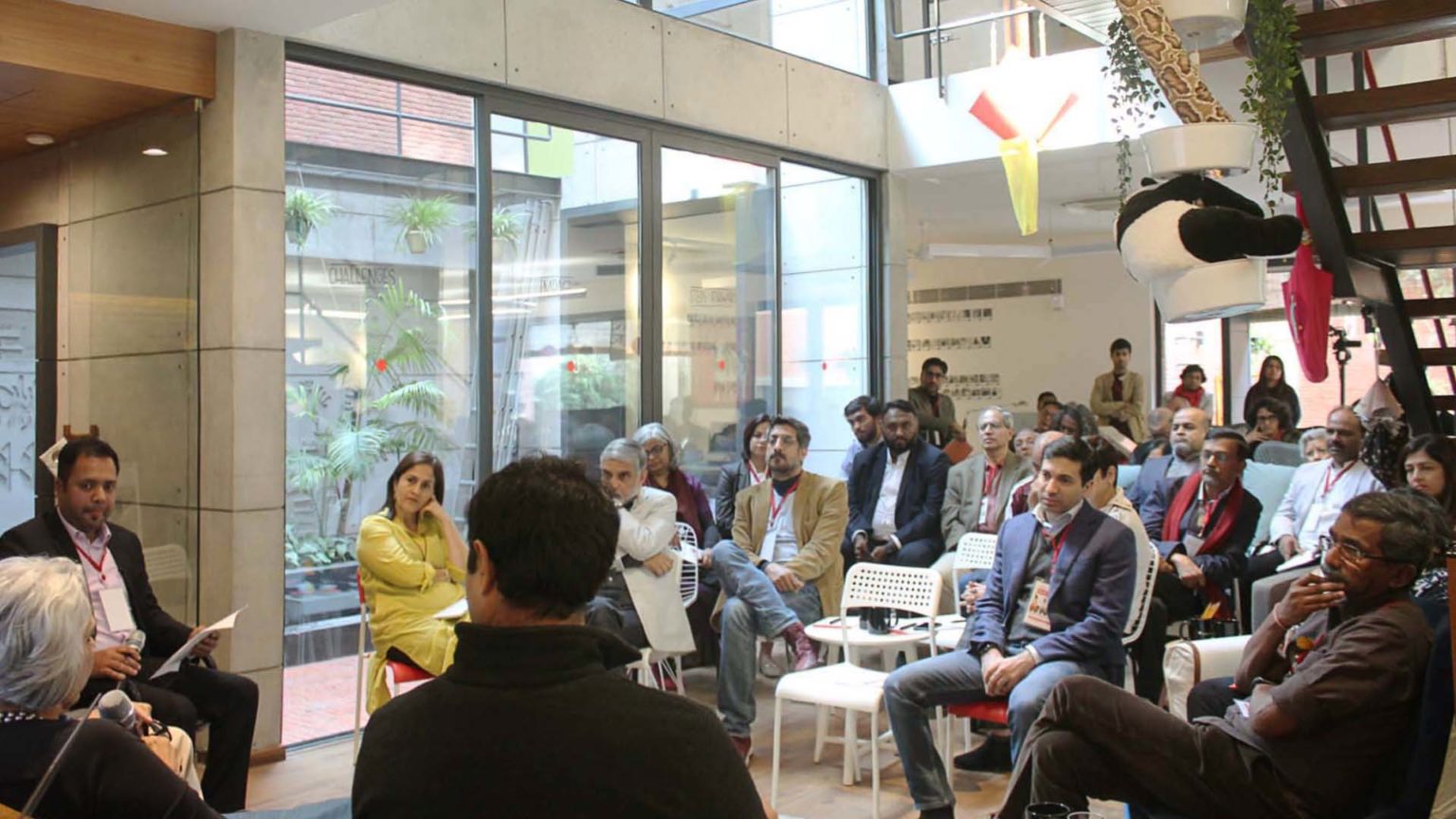
Exchanging design impact stories as a collective
Do we need a national policy?
The next round of discussion was about how and what a Design First policy could achieve. Jatin Bhatt responded noting that it was important to get a commitment from everybody - and how would we achieve that? Sunil Malhotra questioned if we need a policy at all issued at the national level. Taking the Uber case study, he spoke about the effectiveness of the Uber model in rendering good and reliable services, making the driver accountable and the passenger responsible. While the French Government had not been successful in getting the crime rate down in a certain suburb of Paris, with the introduction of Uber, Malhotra says, “Without a single penny from the government, without regulation, the crime rate in one year fell to 18 per cent because Uber showed up.”
Strategic Collaborations and
Co-creation
Voot and upGrad: With the surge of OTT and Online Education market, Voot is giving a boost to Edutainment by partnering with upGrad. Voot is planning a dedicated section of Data Science, Blockchain, Tech and Management content via upGrad, to help working professionals enhance their employability quotient.3
Aditya Sood responded saying that design needs to be forethought with empathy for the ecosystem. There should be some synthetic ability to build bridges between different kinds of stakeholders so they create solutions which can be worked together in new ways. “It may not be regulation, but we are asking for a signal”, said Sood.
Finding a framework
Abhimanyu Nohwar of BCG brought up the need to find a bridge to the Government and ways to “enable these platforms that will allow the public to access all the change-makers and enable the changes.”
Kiran Bir Sethi from Design for Change expressed her belief that the preamble of our constitution is the perfect DesignFirst policy towards creating a humane and empathetic society with greater consciousness.
Anthony Lopez posed the questions - How immersive can design be? How can we co-create? How can we merge with all entities, rather than creating silos?
The discussion unfolded with ideas that reiterated the need to open up the ownership of design, and make it far more inclusive. The British Council report that speaks about 60,000 designers - is that quantification important, asked Archana Shah, or to look at design as a way of life? “If it's got to become national policy, it has to be an inclusive part of everything - whether it's presenting the budget, the environment or creating a transportation policy - design has to be an inherent part of it.”
Changing the perception of design
A central concern was to come up with an actionable plan, to set and achieve more specific goals. One of these was to proliferate design thinking. Sudhir Sharma of Value Labs and DesignIndia Magazine noted, “Design thinking is not relevant in India so far, because 70% of our people don't know what design is. That is why India needs DesignFirst. What design thinking did for the west, design thinking needs to do for India.”
Devika Krishnan, of Vayati Weaves who has worked extensively in the crafts sector, said, “As we move from a subsidized economy to a participatory economy, we need to bring design to the children in the little schools in the tiniest of villages and slums. Some sort of simplification of design needs to start at the age of 6 - then it becomes a way of life.”
Looking at design as a verb and not a noun would aid in the understanding of what design can do. There is a tendency to associate design as an aesthetic endeavour, and few platforms talk about the social impact of design, or design as a strategic tool. Abhimanyu Nohwar said, “The challenge is - if we change that perception, if we bring the multidimensionality of design, people will understand what to do with design and half the battle will be won.”
Related Projects
Bihar Museum
BRAND STRATEGY + BRAND IDENTITY + PRINT DESIGN + UI&UX + DIGITAL & SOCIAL MEDIA + WAYFINDING AND SIGNAGE + ACTIVATION
Energising Central Park
WAYFINDING + SIGNAGE
Join our mailing list
Receive our periodic newsletter on Branding, Experience, and Design thinking.
More Articles
Finding India, making India
Twin Peaks
Follow us on
Insights
Follow Us
© 2025 Lopez Design Pvt. Ltd. All rights reserved
